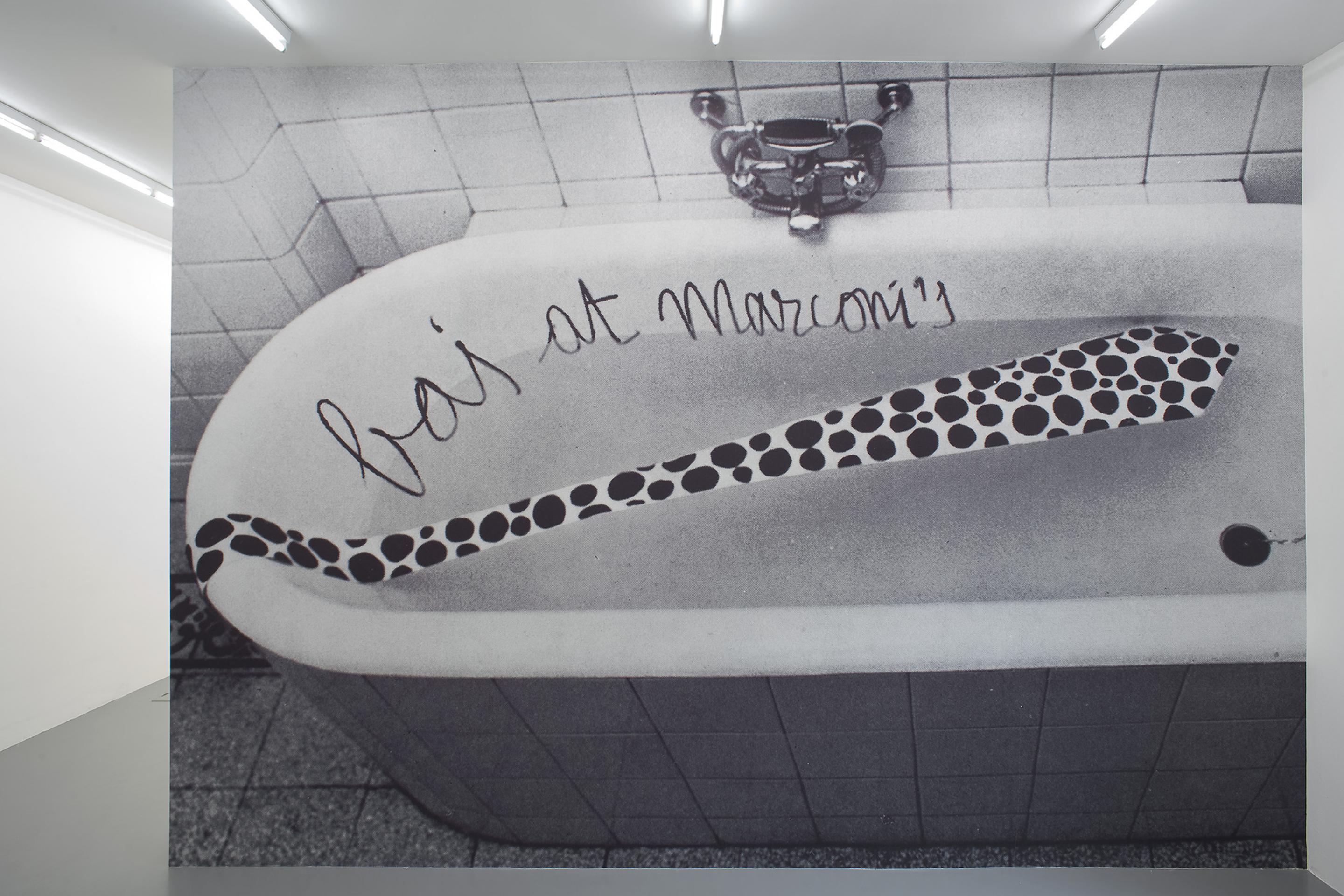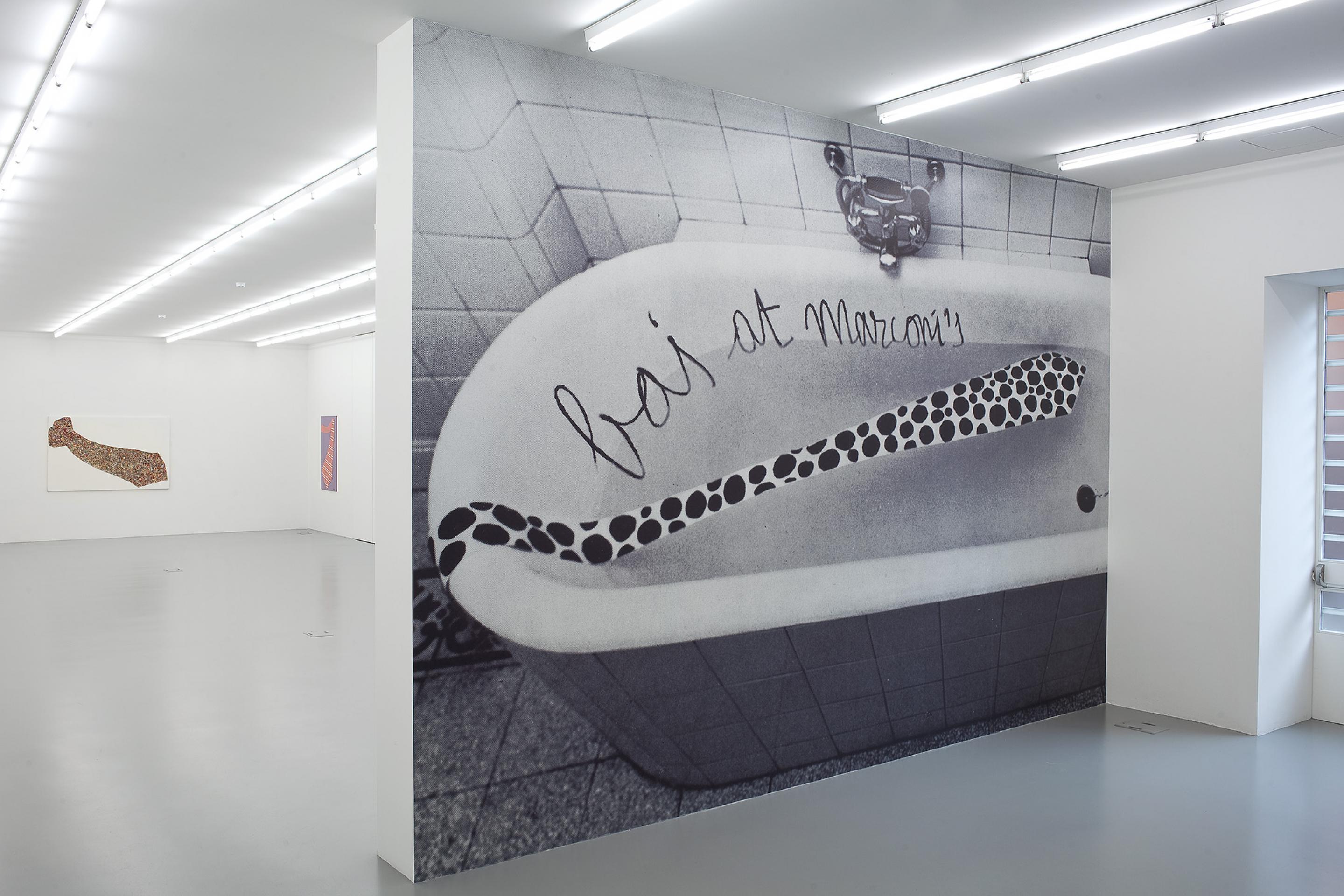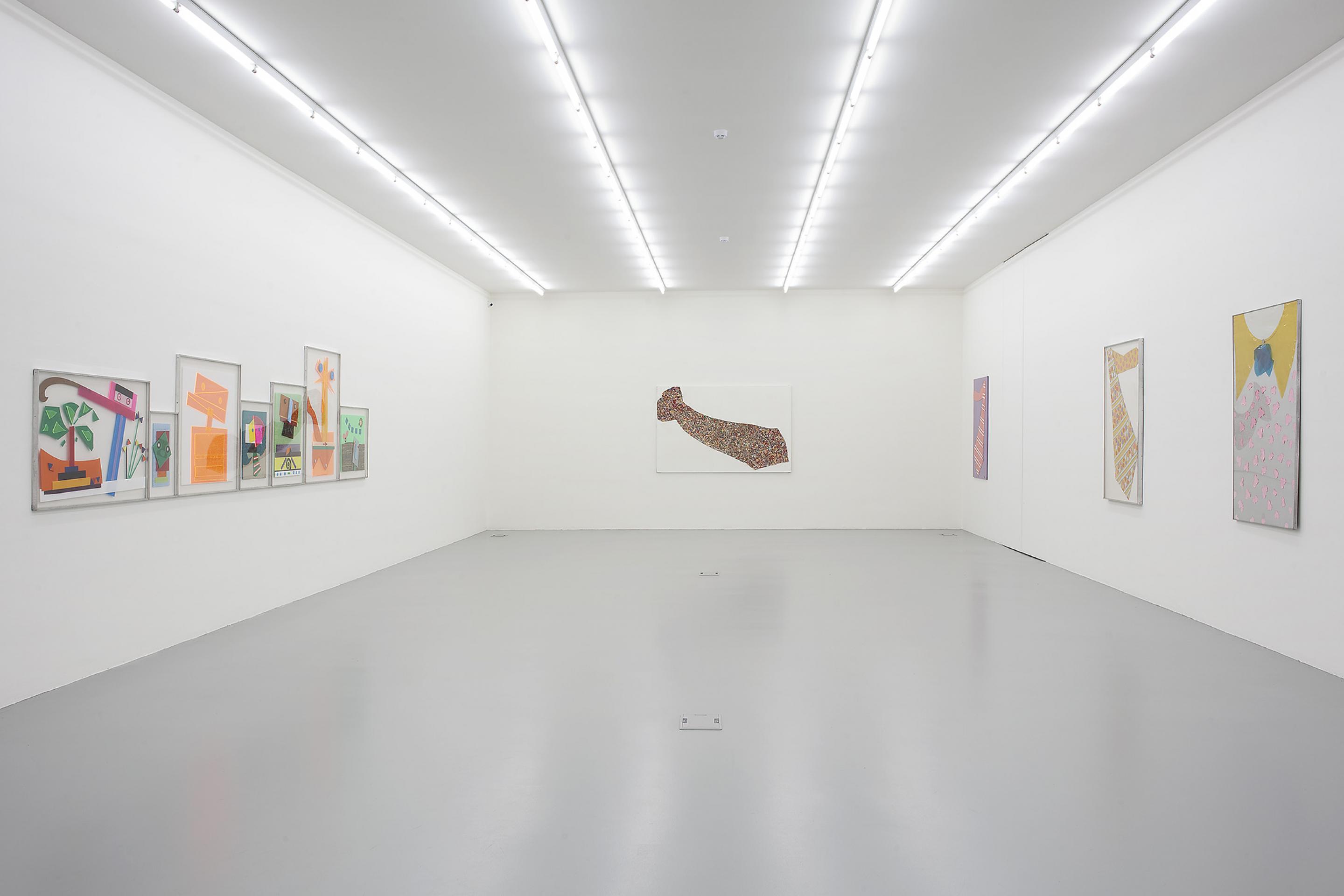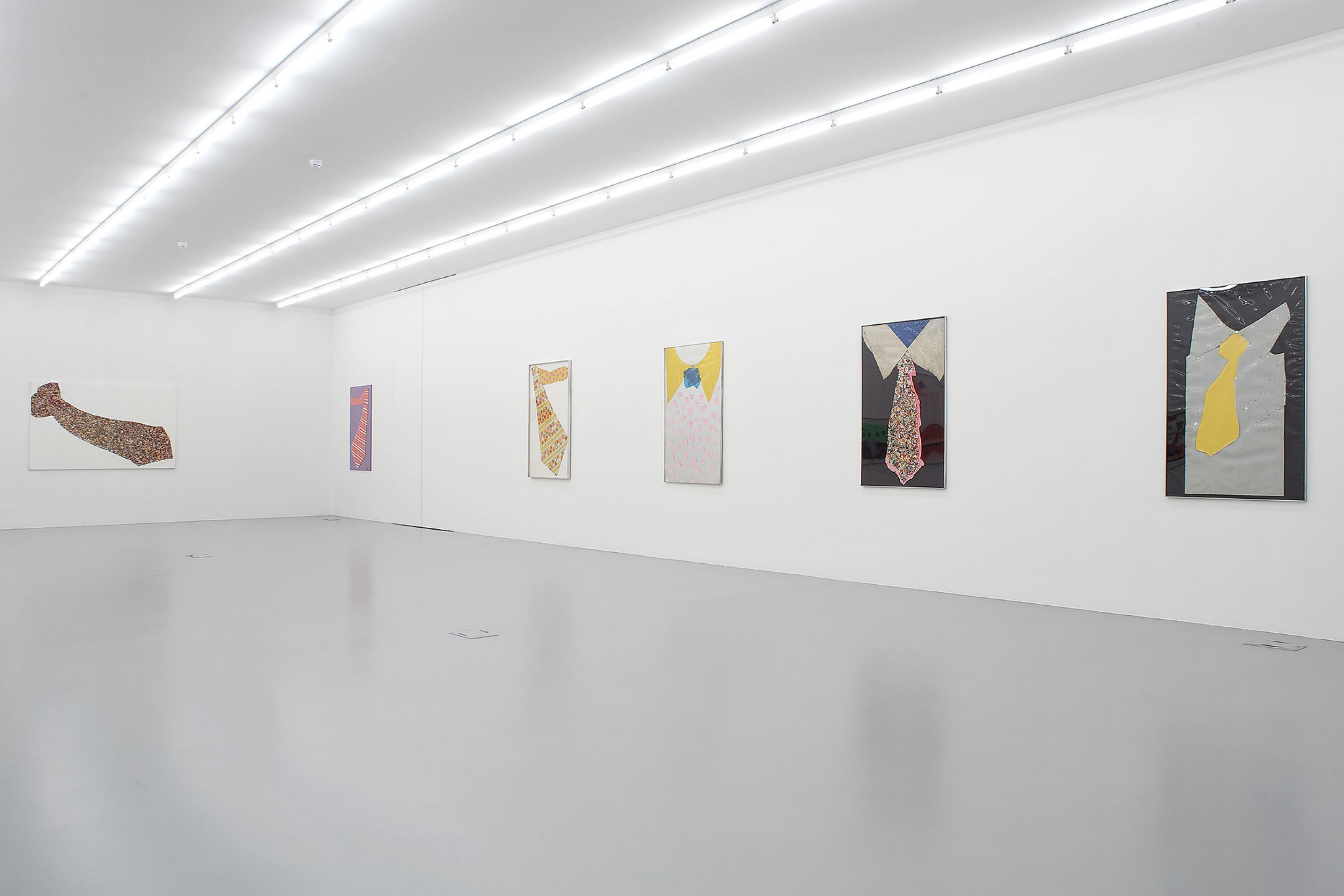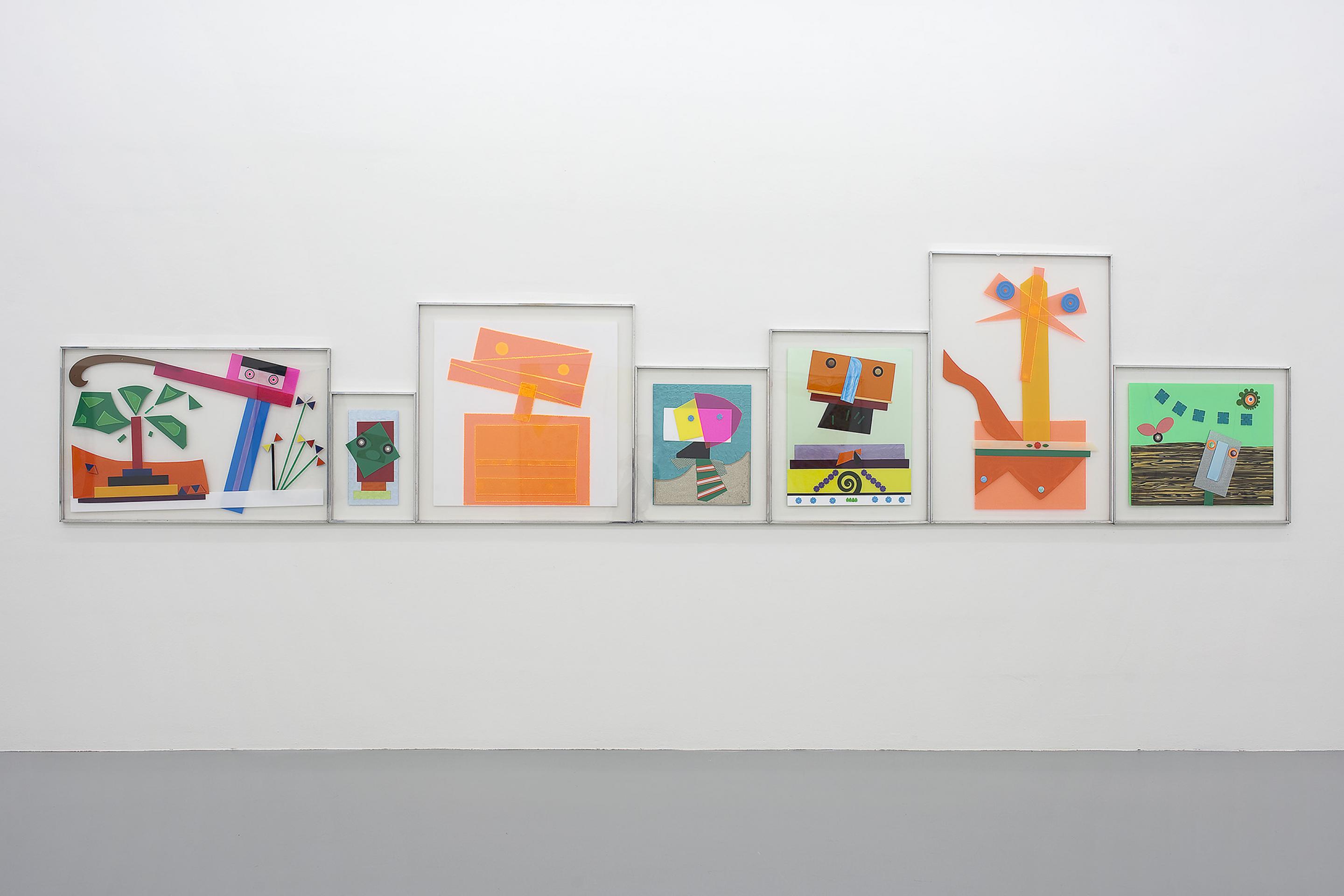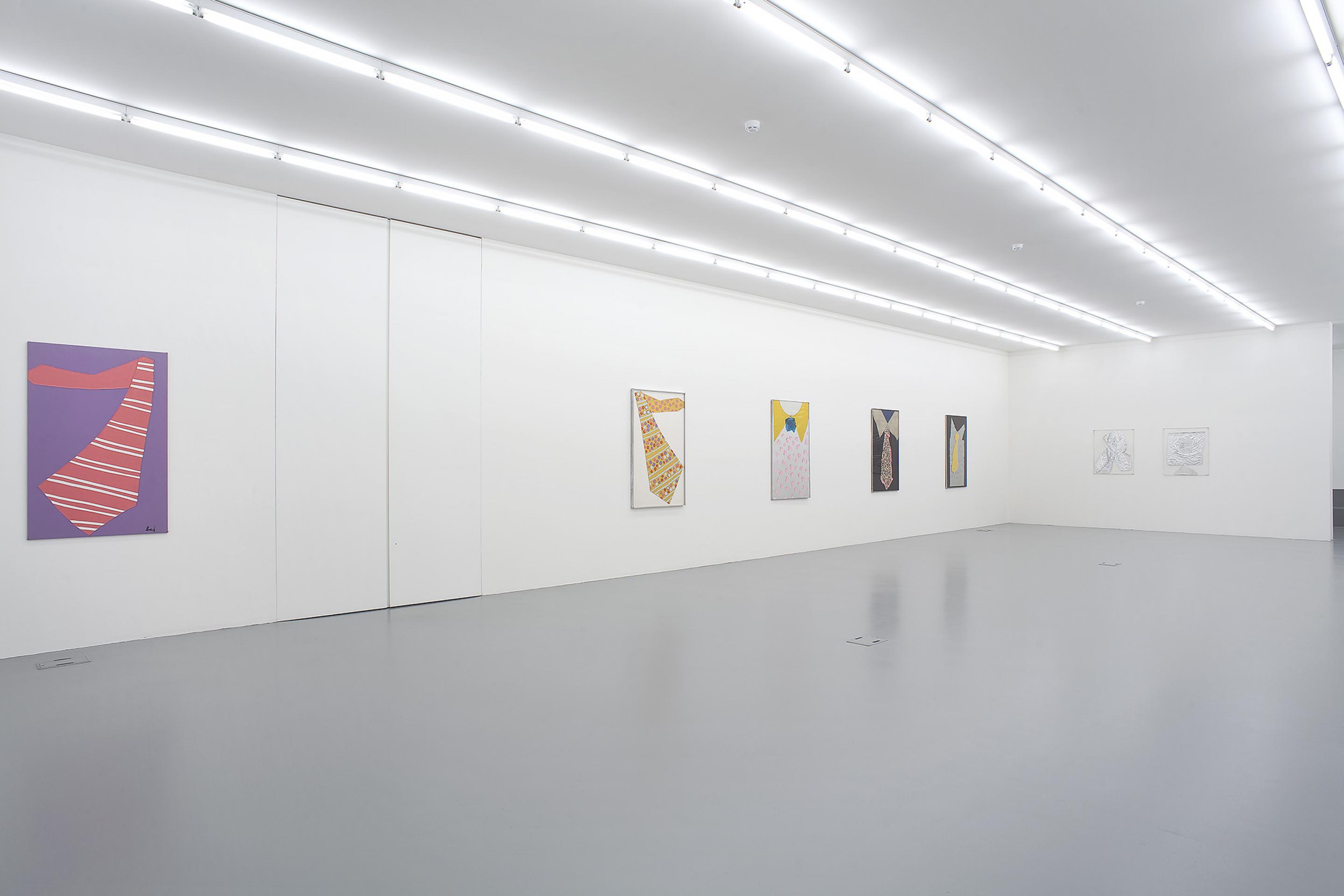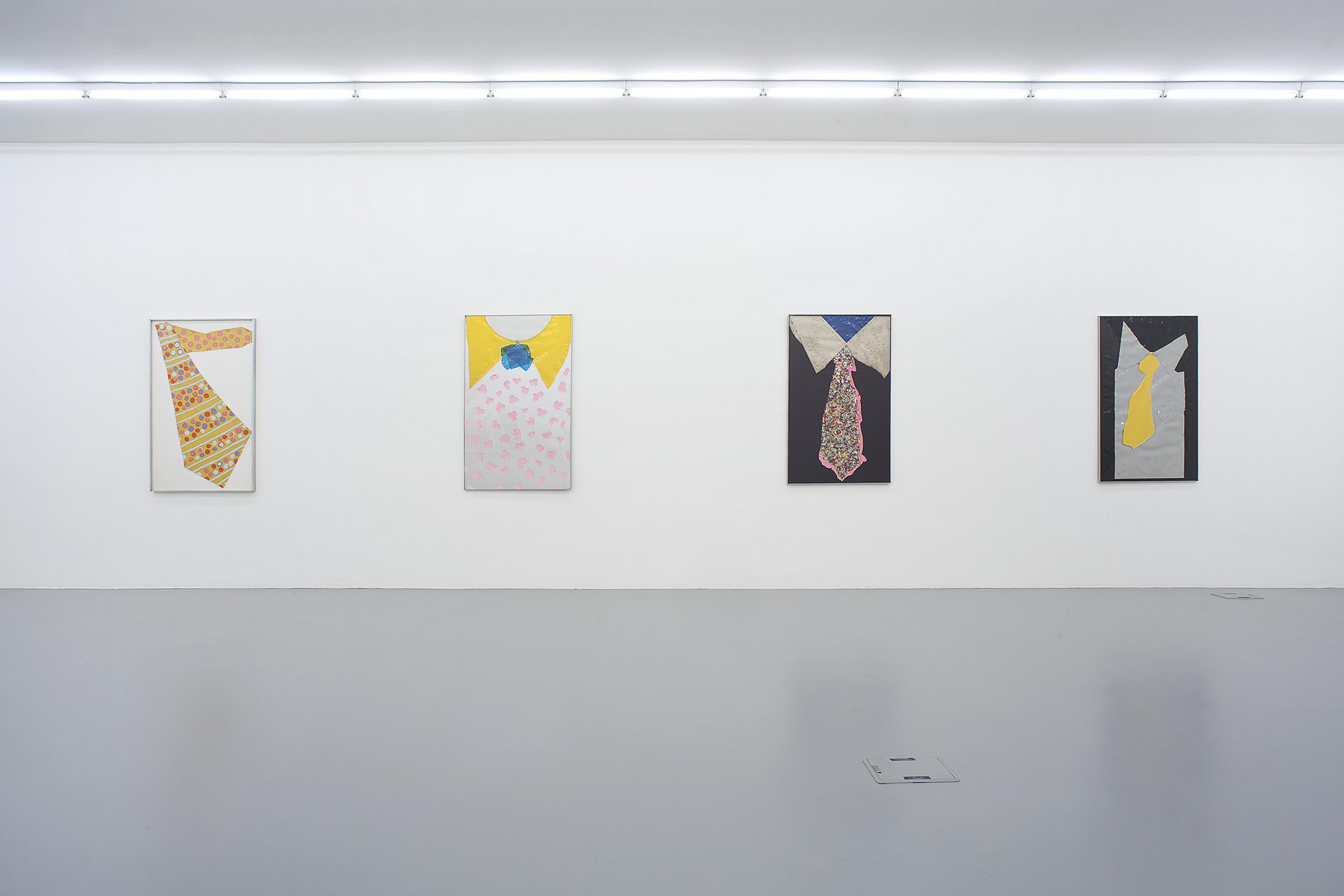EnricoBAJ
Baj at Marconi’s. Plastics 1967 - 1969
Gió Marconi, Milan
24.11.2015–31.01.2016
Baj at Marconi’s. Plastics 1967 - 1969
Gió Marconi, Milan
24.11.2015–31.01.2016
IT
Enrico Baj
Baj at Marconi’s. Plastics 1967 - 1969
Inaugurazione: martedì 24 novembre 2015 dalle 19 alle 21
25 novembre - 31 gennaio 2016
martedì – sabato; 11-19
Giò Marconi ha il piacere di annunciare la mostra Baj at Marconi’s. Plastics 1967 – 1969 che ha luogo contemporaneamente alla mostra di Enrico Baj ospitata da Luxembourg & Dayan a New York.
Contraddistinto da una grande passione per l’eccentrico e un forte impulso iconoclasta, Enrico Baj è una delle figure centrali della neoavanguardia italiana. I suoi scritti di arte e politica hanno giocato un ruolo fondamentale nello sviluppo di movimenti influenti, dal recupero di Dada e Surrealismo fino all’Arte Informale, al gruppo Cobra e al Movimento dell’Arte Nucleare, da lui stesso fondato a Milano con Sergio Dangelo. Baj ha creato una sua iconografia peculiare. Partendo dall’astrazione gestuale della metà degli anni Cinquanta, ha affinato una tecnica pittorica che abbraccia la figurazione così come i simboli del kitsch, sovvertendo le convenzioni borghesi e autoritarie del “buon gusto”.
Verso la fine degli anni Sessanta la ricerca di Enrico Baj si focalizza sulle Plastics.
In questo periodo inizia a esplorare le possibilità estetiche offerte dai materiali plastici.
I primi passi alla scoperta del nuovo medium sono compiuti con i piccoli mattoncini Lego multicolori che Baj inserisce all’interno di collage realizzati con arazzi, conferendo a quelli che sarebbero solo degli anonimi sfondi tessili, un accento molto contemporaneo, vivace e pop.
Baj taglia, assembla, sovrappone l’intero spettro di possibilità offerto dai nuovi materiali industriali: PVC, Lego, polietilene, poliestere, creando una varietà illimitata di personaggi colorati, paesaggi e la sua ultima serie di imponenti cravatte multicolori.
Baj at Marconi’s. Plastics 1967 – 1969 fa riferimento alla mostra di Baj allo Studio Marconi del 1969 dove il pezzo clou era “La cravatta di Jackson Pollock” un monumentale lavoro in plastica, presentato insieme a diverse cravatte realizzate con lo stesso materiale.
Per questa occasione Baj aveva creato i multipli Baj at Marconi’s – borse per la spesa contenenti souvenirs delle sue diverse attività. Questo multiplo incarna l’approccio ironico e originale al nuovo medium e ai materiali prodotti industrialmente che lo conducono nel regno della Pop Art.
Da Giò Marconi sono in mostra diversi lavori in plastica realizzati negli anni Sessanta, tra cui un gruppo di ritratti luminosi e brillanti, decorati con dettagli floreali e bottoni multicolori.
Ogni lavoro è composto da diversi fogli colorati di plexiglass che sovrapponendosi generano variazioni di ombre e di tonalità cromatiche.
Insieme ai ritratti sono presentati lavori più complessi come “Passeggiata al Central Park”, dove un personaggio passeggia allegramente col bastone alzato verso l’alto in un giardino sgargiante di alberi e fiori.
Anche “Hay Tatta Eschige” (il cui titolo trae ispirazione dal Dada) aggiunge una componente narrativa alla mostra raccontando una scena che si svolge in un paesaggio ornamentale di colore verde da cui si dirama una strada in legno che giunge in primo piano.
Accanto ai ritratti multicolori in plexiglass è esposto un dittico composto da due enigmatici personaggi astratti realizzati con fogli di alluminio: un altro dei “nuovi” materiali che Baj era solito utilizzare.
Il focus principale della mostra è dedicato alle cravatte di Enrico Baj.
Questo appare già chiaro all’ingresso della galleria quando il visitatore viene accolto dalla gigantografia dell’immagine pubblicitaria della mostra del 1969 allo Studio Marconi raffigurante una vasca su cui fluttua una lunga cravatta bianca e nera.
Baj sviluppa il motivo della cravatta dalle medaglie, a lungo indagate nelle sue serie dei generali.
Baj fa diventare questi oggetti del desiderio delle vere e proprie icone, disponendole su fondi plastici brillanti e multicolori o su scintillanti tessuti sintetici decorati con motivi astratti.
Nel 1970 il libro d’artista intitolato “La Cravate ne vaut pas une Medaille“ ha spiegato l’iconografia della
cravatta come la medaglia dell’uomo comune – un’onorificenza per la vita di tutti i giorni:
“La cravatta è la struttura minimale sulla quale mi sono focalizzato nel mio lavoro recente. La cravatta è la decorazione preferita dell’uomo moderno perché sostituisce interamente le medaglie e le decorazioni civili e militati. La cravatta è il miglior simbolo della cultura occidentale contemporanea.”.
Enrico Baj (1924-2003)
Nato a Milano, Enrico Baj (1924-2003) inizia a studiare all'Accademia di Brera nel 1938, per poi fuggire a Ginevra solo sei anni più tardi per evitare il reclutamento nell'esercito italiano sotto il regime fascista. Tornato in Italia dopo la guerra, Baj prosegue gli studi in Legge, abbandonati dopo pochi anni, e diviene negli anni cinquanta un pilastro della nuova scena artistica milanese. Baj fa il suo debutto artistico a New York nel 1960, partecipando all'Esposizione Internazionale del Surrealismo “Surrealist Intrusion in the Enchanters’ Domain”, curata da André Breton e Marcel Duchamp presso D'Arcy Galleries. L'anno seguente il suo lavoro viene incluso nella mostra Art of Assemblage (1961), curata da William Seitz al Museum of Modern Art di New York. Nel 1964 viene presentata alla 22° Biennale di Venezia una sala interamente dedicata al lavoro di Baj e nel 1971 seguono le tre importanti retrospettive ospitate da Palazzo Grassi, Venezia, dal Museum of Contemporary Art, Chicago e dal Musée de l'Athénée, Ginevra. Tra le mostre più recenti vi sono: 55 ° Biennale di Venezia (2013), Fondazione Arnaldo Pomodoro, Milano (2013), e Palazzo delle Esposizioni, Roma (2001-2002).
Baj at Marconi’s. Plastics 1967 - 1969
Inaugurazione: martedì 24 novembre 2015 dalle 19 alle 21
25 novembre - 31 gennaio 2016
martedì – sabato; 11-19
Giò Marconi ha il piacere di annunciare la mostra Baj at Marconi’s. Plastics 1967 – 1969 che ha luogo contemporaneamente alla mostra di Enrico Baj ospitata da Luxembourg & Dayan a New York.
Contraddistinto da una grande passione per l’eccentrico e un forte impulso iconoclasta, Enrico Baj è una delle figure centrali della neoavanguardia italiana. I suoi scritti di arte e politica hanno giocato un ruolo fondamentale nello sviluppo di movimenti influenti, dal recupero di Dada e Surrealismo fino all’Arte Informale, al gruppo Cobra e al Movimento dell’Arte Nucleare, da lui stesso fondato a Milano con Sergio Dangelo. Baj ha creato una sua iconografia peculiare. Partendo dall’astrazione gestuale della metà degli anni Cinquanta, ha affinato una tecnica pittorica che abbraccia la figurazione così come i simboli del kitsch, sovvertendo le convenzioni borghesi e autoritarie del “buon gusto”.
Verso la fine degli anni Sessanta la ricerca di Enrico Baj si focalizza sulle Plastics.
In questo periodo inizia a esplorare le possibilità estetiche offerte dai materiali plastici.
I primi passi alla scoperta del nuovo medium sono compiuti con i piccoli mattoncini Lego multicolori che Baj inserisce all’interno di collage realizzati con arazzi, conferendo a quelli che sarebbero solo degli anonimi sfondi tessili, un accento molto contemporaneo, vivace e pop.
Baj taglia, assembla, sovrappone l’intero spettro di possibilità offerto dai nuovi materiali industriali: PVC, Lego, polietilene, poliestere, creando una varietà illimitata di personaggi colorati, paesaggi e la sua ultima serie di imponenti cravatte multicolori.
Baj at Marconi’s. Plastics 1967 – 1969 fa riferimento alla mostra di Baj allo Studio Marconi del 1969 dove il pezzo clou era “La cravatta di Jackson Pollock” un monumentale lavoro in plastica, presentato insieme a diverse cravatte realizzate con lo stesso materiale.
Per questa occasione Baj aveva creato i multipli Baj at Marconi’s – borse per la spesa contenenti souvenirs delle sue diverse attività. Questo multiplo incarna l’approccio ironico e originale al nuovo medium e ai materiali prodotti industrialmente che lo conducono nel regno della Pop Art.
Da Giò Marconi sono in mostra diversi lavori in plastica realizzati negli anni Sessanta, tra cui un gruppo di ritratti luminosi e brillanti, decorati con dettagli floreali e bottoni multicolori.
Ogni lavoro è composto da diversi fogli colorati di plexiglass che sovrapponendosi generano variazioni di ombre e di tonalità cromatiche.
Insieme ai ritratti sono presentati lavori più complessi come “Passeggiata al Central Park”, dove un personaggio passeggia allegramente col bastone alzato verso l’alto in un giardino sgargiante di alberi e fiori.
Anche “Hay Tatta Eschige” (il cui titolo trae ispirazione dal Dada) aggiunge una componente narrativa alla mostra raccontando una scena che si svolge in un paesaggio ornamentale di colore verde da cui si dirama una strada in legno che giunge in primo piano.
Accanto ai ritratti multicolori in plexiglass è esposto un dittico composto da due enigmatici personaggi astratti realizzati con fogli di alluminio: un altro dei “nuovi” materiali che Baj era solito utilizzare.
Il focus principale della mostra è dedicato alle cravatte di Enrico Baj.
Questo appare già chiaro all’ingresso della galleria quando il visitatore viene accolto dalla gigantografia dell’immagine pubblicitaria della mostra del 1969 allo Studio Marconi raffigurante una vasca su cui fluttua una lunga cravatta bianca e nera.
Baj sviluppa il motivo della cravatta dalle medaglie, a lungo indagate nelle sue serie dei generali.
Baj fa diventare questi oggetti del desiderio delle vere e proprie icone, disponendole su fondi plastici brillanti e multicolori o su scintillanti tessuti sintetici decorati con motivi astratti.
Nel 1970 il libro d’artista intitolato “La Cravate ne vaut pas une Medaille“ ha spiegato l’iconografia della
cravatta come la medaglia dell’uomo comune – un’onorificenza per la vita di tutti i giorni:
“La cravatta è la struttura minimale sulla quale mi sono focalizzato nel mio lavoro recente. La cravatta è la decorazione preferita dell’uomo moderno perché sostituisce interamente le medaglie e le decorazioni civili e militati. La cravatta è il miglior simbolo della cultura occidentale contemporanea.”.
Enrico Baj (1924-2003)
Nato a Milano, Enrico Baj (1924-2003) inizia a studiare all'Accademia di Brera nel 1938, per poi fuggire a Ginevra solo sei anni più tardi per evitare il reclutamento nell'esercito italiano sotto il regime fascista. Tornato in Italia dopo la guerra, Baj prosegue gli studi in Legge, abbandonati dopo pochi anni, e diviene negli anni cinquanta un pilastro della nuova scena artistica milanese. Baj fa il suo debutto artistico a New York nel 1960, partecipando all'Esposizione Internazionale del Surrealismo “Surrealist Intrusion in the Enchanters’ Domain”, curata da André Breton e Marcel Duchamp presso D'Arcy Galleries. L'anno seguente il suo lavoro viene incluso nella mostra Art of Assemblage (1961), curata da William Seitz al Museum of Modern Art di New York. Nel 1964 viene presentata alla 22° Biennale di Venezia una sala interamente dedicata al lavoro di Baj e nel 1971 seguono le tre importanti retrospettive ospitate da Palazzo Grassi, Venezia, dal Museum of Contemporary Art, Chicago e dal Musée de l'Athénée, Ginevra. Tra le mostre più recenti vi sono: 55 ° Biennale di Venezia (2013), Fondazione Arnaldo Pomodoro, Milano (2013), e Palazzo delle Esposizioni, Roma (2001-2002).
EN
Enrico Baj
Baj at Marconi’s. Plastics 1967 - 1969
Opening Tuesday November 24, 2015 from 7pm to 9 pm
November 25, 2015 - January 31, 2016
From Tuesday to Saturday, 11-19
Giò Marconi is pleased to announce the exhibition Baj at Marconi’s. Plastics 1967 – 1969 which takes place in conjunction with the Enrico Baj exhibition currently on display at Luxembourg & Dayan in New York.
With a passion for the eccentric and a strong iconoclastic impulse, Enrico Baj was one of the central figures of the Italian neo-avant garde. His art and political writings have played an instrumental role in the chronologies of influential movements, from Dada and Surrealism to Art Informel and Cobra, as well as the Milanese movement of Nuclear Art, which he co-founded with Sergio Dangelo. Throughout it all, Baj formed an idiosyncratic iconography that was all his own. Departing from gestural abstraction in the mid-1950s, he honed a painterly practice that defiantly embraced figuration and kitsch symbols, subverting authoritative, bourgeois conventions of “good taste.”
In the late 1960s Enrico Baj’s main focus was on his Plastics.
During this period he began exploring the aesthetic possibilities of all different kinds of plastic materials. His first steps into the new medium were made with little multi-coloured Lego bricks that Baj included into his conventional tapestry canvases, thereby adding a very contemporary, colourful and pop art component to his otherwise plushy fabric backgrounds.
He cut, assembled and superimposed onto the entire spectrum that was offered by these new industrial materials: PVC, lego, polyethylene, polyester – all this gave birth to numberless colourful characters, landscapes and his ultimate series of loud and varicoloured neckties.
The centerpiece of Baj’s 1969 Studio Marconi exhibition, which this show is a reference to, was the “La cravatta di Jackson Pollock”, a monumental plastic work. But the show included also several other tie images, all made of plastic. To accompany that exhibition Baj had made the multiple Baj at Marconi’s – a plastic shopping bag crammed with souvenirs of his various activities. This jaunty multiple embodied the inventive approach to new mediums and man-made materials that brought him into the realm of Pop art.
At Gio’ Marconi, various works of his 1960s plastic series are on display:
A group of bright and cheerful portraits adorned with flowery details and colourful buttons is being shown. Each of these works is composed of differently coloured sheets of plexiglass overlapping each other and thereby creating different shades and nuances of coulours.
The portraits are presented together with more elaborate works like “Passeggiata al Central Park”. In there, a walker with an uplifted walking stick happily strolls within a gaudy landscape of trees and flowers. Also “Hay Tatta Eschige” (a title stemming from Dada) with its decorative green landscape and wooden street in the foreground adds a more narrative component to the show.
As an addition to the multi-coloured plexiglass portraits a diptych of two enigmatic abstract portraits made out of aluminium foil, another “new” material that Baj frequently used, is displayed.
The main focus of the exhibition is on Enrico Baj’s neckties.
This already becomes apparent in the show’s anteroom which welcomes the visitor with an over life-size photograph of the advertisement of the 1969 exhibition at the Studio Marconi that shows a bathtub with a long floating dotted black and white necktie.
From the medals, which Baj had used excessively for his series of generals, he developed the motif of the necktie. Inside the exhibiton one whole wall is dedicated to all the various tie works. On shiny varicoloured plastic backgrounds or glittery polyester fabrics with abstract patterns Baj playfully drapes the overdimensioned, striped, polka-dotted motley object of desire and creates a modern day icon out of it.
In a 1970 artist’s book titled “La Cravate ne vaut pas une Medaille“, he explained the necktie’s iconography as a common man’s medal – an everyday badge of honour: “The tie is the minimal structure upon which I have focused in my recent work. The tie is the decoration preferred by today’s men because it entirely substitutes medals, military and civil decorations. The tie is the best symbol of today’s western culture and thought.”
Enrico Baj (1924-2003)
Born in Milan, Enrico Baj (1924-2003) began studying at the Brera Academy of Art in 1938, only to flee to Geneva six years later in order to avoid conscription to the Italian army under Mussolini. Returning to Italy after the war, Baj pursued law studies, which he duly abandoned, becoming instead a mainstay in the Milanese avant garde art scene by the mid-1950s. Baj had his debut in New York in 1960, as part of the exhibition Surrealist Intrusion in the Enchanters’ Domain, organized by Marcel Duchamp and André Breton at D’Arcy Galleries. The following year, his work was included in the influential exhibition Art of Assemblage (1961), organized by William Seitz at the Museum of Modern Art, New York. In 1964 a room devoted to Baj’s work was presented in the 22nd Venice Biennial, and three major retrospectives followed in 1971, held at Palazzo Grassi, Venice; Museum of Contemporary Art, Chicago; and Musée de l’Athénée, Geneva. Recent exhibitions were held in the following venues, among others: the 55th Venice Biennial (2013), Fondazione Arnaldo Pomodoro, Milan (2013), and Palazzo delle Esposizioni, Rome (2001-2002).
Thanks to
Roberta Baj Cerini
Fondazione Marconi
Baj at Marconi’s. Plastics 1967 - 1969
Opening Tuesday November 24, 2015 from 7pm to 9 pm
November 25, 2015 - January 31, 2016
From Tuesday to Saturday, 11-19
Giò Marconi is pleased to announce the exhibition Baj at Marconi’s. Plastics 1967 – 1969 which takes place in conjunction with the Enrico Baj exhibition currently on display at Luxembourg & Dayan in New York.
With a passion for the eccentric and a strong iconoclastic impulse, Enrico Baj was one of the central figures of the Italian neo-avant garde. His art and political writings have played an instrumental role in the chronologies of influential movements, from Dada and Surrealism to Art Informel and Cobra, as well as the Milanese movement of Nuclear Art, which he co-founded with Sergio Dangelo. Throughout it all, Baj formed an idiosyncratic iconography that was all his own. Departing from gestural abstraction in the mid-1950s, he honed a painterly practice that defiantly embraced figuration and kitsch symbols, subverting authoritative, bourgeois conventions of “good taste.”
In the late 1960s Enrico Baj’s main focus was on his Plastics.
During this period he began exploring the aesthetic possibilities of all different kinds of plastic materials. His first steps into the new medium were made with little multi-coloured Lego bricks that Baj included into his conventional tapestry canvases, thereby adding a very contemporary, colourful and pop art component to his otherwise plushy fabric backgrounds.
He cut, assembled and superimposed onto the entire spectrum that was offered by these new industrial materials: PVC, lego, polyethylene, polyester – all this gave birth to numberless colourful characters, landscapes and his ultimate series of loud and varicoloured neckties.
The centerpiece of Baj’s 1969 Studio Marconi exhibition, which this show is a reference to, was the “La cravatta di Jackson Pollock”, a monumental plastic work. But the show included also several other tie images, all made of plastic. To accompany that exhibition Baj had made the multiple Baj at Marconi’s – a plastic shopping bag crammed with souvenirs of his various activities. This jaunty multiple embodied the inventive approach to new mediums and man-made materials that brought him into the realm of Pop art.
At Gio’ Marconi, various works of his 1960s plastic series are on display:
A group of bright and cheerful portraits adorned with flowery details and colourful buttons is being shown. Each of these works is composed of differently coloured sheets of plexiglass overlapping each other and thereby creating different shades and nuances of coulours.
The portraits are presented together with more elaborate works like “Passeggiata al Central Park”. In there, a walker with an uplifted walking stick happily strolls within a gaudy landscape of trees and flowers. Also “Hay Tatta Eschige” (a title stemming from Dada) with its decorative green landscape and wooden street in the foreground adds a more narrative component to the show.
As an addition to the multi-coloured plexiglass portraits a diptych of two enigmatic abstract portraits made out of aluminium foil, another “new” material that Baj frequently used, is displayed.
The main focus of the exhibition is on Enrico Baj’s neckties.
This already becomes apparent in the show’s anteroom which welcomes the visitor with an over life-size photograph of the advertisement of the 1969 exhibition at the Studio Marconi that shows a bathtub with a long floating dotted black and white necktie.
From the medals, which Baj had used excessively for his series of generals, he developed the motif of the necktie. Inside the exhibiton one whole wall is dedicated to all the various tie works. On shiny varicoloured plastic backgrounds or glittery polyester fabrics with abstract patterns Baj playfully drapes the overdimensioned, striped, polka-dotted motley object of desire and creates a modern day icon out of it.
In a 1970 artist’s book titled “La Cravate ne vaut pas une Medaille“, he explained the necktie’s iconography as a common man’s medal – an everyday badge of honour: “The tie is the minimal structure upon which I have focused in my recent work. The tie is the decoration preferred by today’s men because it entirely substitutes medals, military and civil decorations. The tie is the best symbol of today’s western culture and thought.”
Enrico Baj (1924-2003)
Born in Milan, Enrico Baj (1924-2003) began studying at the Brera Academy of Art in 1938, only to flee to Geneva six years later in order to avoid conscription to the Italian army under Mussolini. Returning to Italy after the war, Baj pursued law studies, which he duly abandoned, becoming instead a mainstay in the Milanese avant garde art scene by the mid-1950s. Baj had his debut in New York in 1960, as part of the exhibition Surrealist Intrusion in the Enchanters’ Domain, organized by Marcel Duchamp and André Breton at D’Arcy Galleries. The following year, his work was included in the influential exhibition Art of Assemblage (1961), organized by William Seitz at the Museum of Modern Art, New York. In 1964 a room devoted to Baj’s work was presented in the 22nd Venice Biennial, and three major retrospectives followed in 1971, held at Palazzo Grassi, Venice; Museum of Contemporary Art, Chicago; and Musée de l’Athénée, Geneva. Recent exhibitions were held in the following venues, among others: the 55th Venice Biennial (2013), Fondazione Arnaldo Pomodoro, Milan (2013), and Palazzo delle Esposizioni, Rome (2001-2002).
Thanks to
Roberta Baj Cerini
Fondazione Marconi
